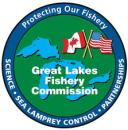Ways to Get Involved
We would love to partner with you on restoring habitat and species, or conducting outreach with youth and the public on the environment. Please contact us to see what opportunities are available. We currently work with several local groups on community pollinator gardens, removing invasive species invasive species
An invasive species is any plant or animal that has spread or been introduced into a new area where they are, or could, cause harm to the environment, economy, or human, animal, or plant health. Their unwelcome presence can destroy ecosystems and cost millions of dollars.
Learn more about invasive species projects, and conducting public outreach on the environment and the Great Lakes. Whether you want to further conservation, learn more about nature or share your love of the outdoors, you’ve come to the right place. We partner with volunteers, youth groups/students, landowners, neighbors and residents of both urban and rural communities to make a lasting difference. There are opportunities for everyone to get involved!
Volunteers: Gain new experiences and meet new people while helping to advance fish and aquatic conservation. If you’re just interested in assisting with some of the work we do, we have both office and field opportunities for you.
Local Groups: We have a variety of partnerships with local groups on projects ranging from local pollinator plantings to educational presentations. For opportunities to help with invasive species, contact the New York Partnership for Regional Invasive Species Management in Western New York and Finger Lakes regions.
Youth: Whether you’re a high school or college student seeking internship hours for school credit or just looking for more experience in this field, we have opportunities for you to learn more about this career.
Volunteering
Discover for yourself what tens of thousands of volunteers have learned: Volunteering for the U.S. Fish and Wildlife Service is fun and rewarding in many ways. Master new skills. Meet new friends. Enjoy a sense of accomplishment from doing your part to further wildlife conservation for the pleasure of generations to follow. Check out our station's latest volunteer opportunities on volunteer.gov. We can accommodate a few volunteers per season, whether they are official internships for school credit or just looking for the experience.
Our Partners
Partnerships foster creative solutions to challenging situations and often the results are greater than the sum of the parts. Learn more about our local partners:
- Buffalo Public Schools
- Buffalo State College Great Lakes Center
- Buffalo Urban Wildlife Refuge Partnership: Where History Meets Nature
- Great Lakes Fishery Commission
- New York State Department of Environmental Conservation
- Ontario Ministry of Natural Resources and Forestry
- Soil and Water Conservation Districts
- U.S. Geological Services
- U.S. Army Corps of Engineers Buffalo District
Outreach
Why is outreach and education important?
Research shows us that outreach and environmental education has a host of benefits for children, schools, and our families. Just a few of these include: enhancing creativity, imagination and critical thinking skills; helping students make connections between the classroom and the real world; and developing an appreciation and respect for the environment while promoting healthy lifestyles and strengthening communities.
What do we do?
The program seeks to educate, inform, and improve the public’s awareness to promote a better understanding of the role each of us plays in the environment. The outreach and education program offers presentations to area schools, scout troops, youth organizations and environmental fairs.
- Students, Nature and Photography (SNAP!)
- Schoolyard Habitat
- Pollinators and Saving the Monarch
Education Programs
The Lower Great Lakes FWCO works with local colleges and high schools to provide educational opportunities to students interested in pursuing careers in environmental science or fisheries. Through the internship program, upper-level undergraduate and graduate students gain meaningful work experience while earning college credits. Our staff, together with the students and academic advisors, develop individual projects for each intern that includes project planning, data collection, and reporting. Volunteers are an important component of our office.
Students, Nature and Photography (SNAP!)
Why SNAP?
Recent studies show that an increasing number of children prefer to spend time indoors immersed in a virtual reality of television and video games rather than explore the natural reality outside their front doors. Richard Louv, author of Last Child in the Woods: Saving Our Children from Nature Deficit Disorder, chronicles this trend. This separation from the experience of nature can result in a host of physical and mental issues, ranging from childhood obesity to Attention Deficit Hyperactivity Disorder (ADHD). Through SNAP! children are introduced to nature and the outdoors using cameras and technology, something today’s youth have inevitably grown up with as part of their daily lives. This provides children across western New York with a range of opportunities to form the lasting habit of spending time outdoors. The children develop their own sense of accomplishment in their exploration of nature and the challenges of creating great pictures.
How does it work?
Each event is designed to meet student needs based on age and ability. Our staff and volunteers work with small groups of students at an outdoor site. Students learn how to use digital cameras and techniques for successful nature photography. They also get lessons in ecology which encourages questions and exploration in this outdoor-educational setting. At the end of the program, the students select their favorite photo and write a brief statement about it, describing the inspirational meaning the image has for them. Students also receive a framed copy of their photograph to take home and/or exhibit at their school.
Community Impact
Studies have demonstrated that “nature smart” children perform better on standardized tests and become more resourceful and better problem solvers as a result of the hands-on learning that our natural environment demands of us. The exploration of natural habitat outside our homes, schools and shopping malls increases physical fitness and makes for happier, well-adjusted kids. This program teaches children the joy of experiencing nature firsthand and the art of photography. SNAP! helps promote environmental stewardship and creates the next generation of local conservationists dedicated to protecting and enhancing our ecosystems.
Schoolyard Habitats
Why are schoolyard habitats important?
Schoolyard habitats not only benefit wildlife, they also get children in touch with nature. It has been recognized nationwide that getting children outside and reconnected with the natural environment is an essential step in their development. Kids who are given the opportunity to explore nature are more willing to experience new things. This program provides an interactive opportunity to teach children about nature and how they can help take care of it. In addition, students who spend a portion of the day outside tend to have longer attention spans, which can translate into learning more effectively and doing better in school.
What do we do?
Through the Schoolyard Habitat Program, our staff works with the school and partner organizations to design and establish natural habitats on school grounds throughout western New York using native plants to benefit wildlife. These habitats can be pollinator gardens, bird gardens, forests, rain gardens, ponds, or meadows. In the creation of the habitats, we use all native plantings. Habitat type is dependent on soil type, shade, location, space, and the needs of the school. They are designed to not only provide food and refuge for wildlife, but to serve as a place of learning for children. To facilitate that learning, we help teachers find ways to utilize the habitat so that it fits in with their curriculum. We work with teachers of the arts and sciences in primary and secondary schools. Schools are not required to provide funding for these projects. However, any match they would like to contribute is welcomed. There are grants available for which schools can apply.
For more information, contact:









